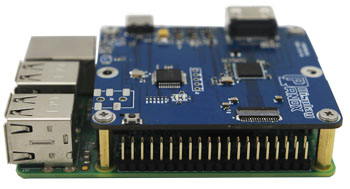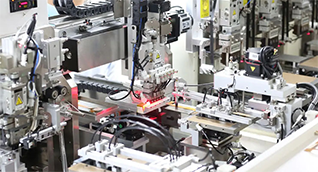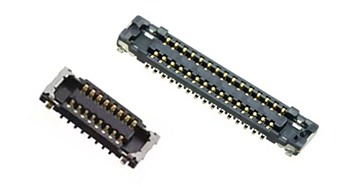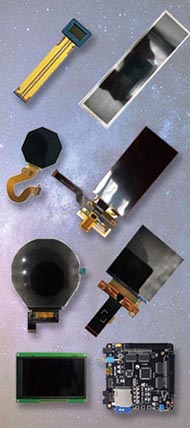With the development of science and technology, LCD screens have become a go-to product for many because they emit no radiation, have large display information, and offer long service life.
So, LCD screens offer many advantages, but how are they made? Here is how:
ITO graphic etching (ITO glass input to complete the map inspection)
- ITO glass input: The appropriate ITO glass is selected for the basket, which is dependent on the requirements of the product in question. It is vital that the specification and model of the ITO glass meet the requirements of the product. The ITO layer must be inserted into the basket facing upwards.
- Glass cleaning and drying: ITO glass will be washed with cleaning agents and deionized water (DI water). Any impurities and oil stains on the ITO surface will be washed by physical or chemical methods, with the water then removed and the product dried in preparation for the next stage of the process.
- Photoresist coating: An even layer of photoresist will be applied to the conductive layer of ITO glass, and the photoresist-coated glass will be pretreated at a certain temperature.
- Front baking: The photoresist-coated glass will be heated at a certain temperature for a specific period of time. This will make the solvent in the photoresist become volatile, increasing the adhesion with the glass surface.
- Exposure: UV light (UV) will be used to irradiate the surface of the photoresist through the pre-made electrode graphic mask, causing the photoresist layer to react. The photoresist mask on the photoresist-coated glass is covered with photoresist to selectively expose the photoresist under the UV lamp.
- Development: The glass surface is treated with a developer solution. The photoresist layer is removed after light decomposition, and the photoresist layer of the unexposed part is retained. A chemical method is used to dissolve the photoresist on the (UV) light irradiation part in the developer, and the developed glass undergoes heat treatment.
- Hard film: The glass undergoes heat treatment again – at very high temperature – in order to make the photoresist stronger.
- Etching: The ITO film without photoresist is etched away with an acid etching solution, so as to obtain the ITO electrode pattern required. Note: ITO glass is conductive glass (In203 and Sn02), which easily reacts with acid. This is used to etch away excess ITO, so as to obtain the corresponding pull electrode.
- Film removal: A high concentration of lye (Naoh solution) is used as a film removal solution to peel off the remaining photoresist on the glass, so as to form ITO graphics that exactly match the photoresist mask on ITO glass.
- Cleaning and drying: The remaining lye, residual photoresist, and other impurities are rinsed off with high purity water.
LCD Assembly Process After ITO Glass (dispay cell)




Panox Display has built "Automatic Production Line" which can produce 50K OLED/LCD per day.
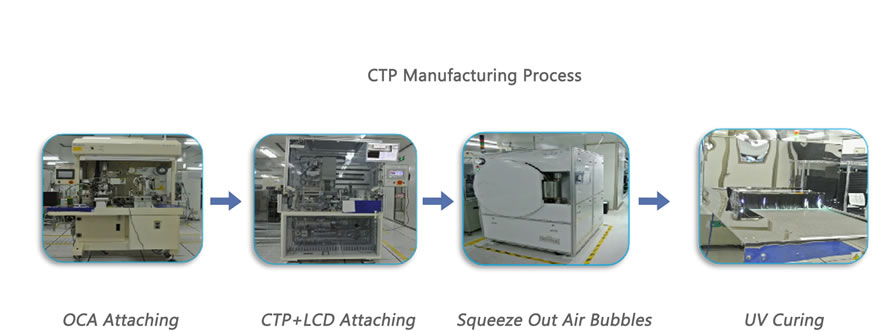

Design Your Customized LCD
There are 2 automatic production lines in Panox Display factory, has a capacity of 300K pcs every months. Main OEM products include 1.7icnh, 2.4 inch,2.8 inch, 3.2inch,4.3 inch,4.7inch, 5.0 inch,5.5 inch ,6.0 inch LCD and other sizes, most of them applied in Mobile displays, such as Moto G5,LG ..
Many products demand a custom LCD to meet application specific display requirements, electrical specifications, or mechanical dimensions. For over 10 years Panox Display has specialized in designing and producing custom LCDs and can quickly help you to create the ideal display for your product. Please click here to send your request designing a custom LCD panel.







